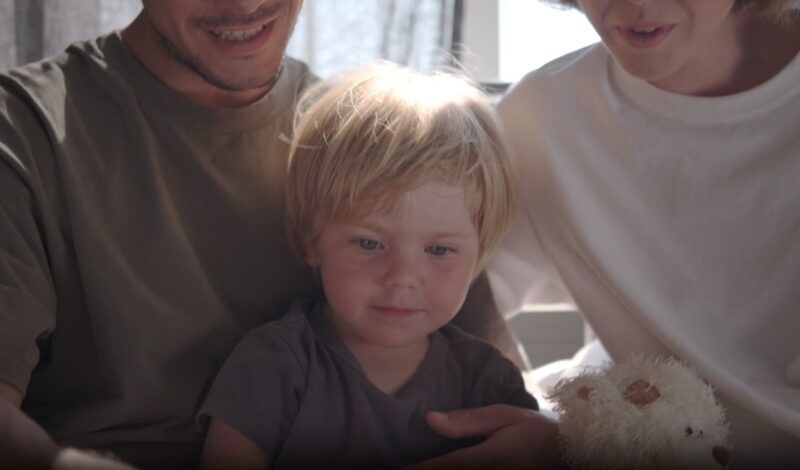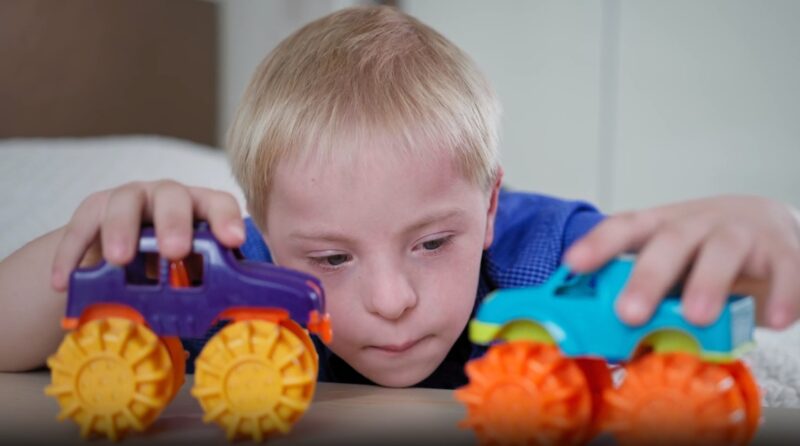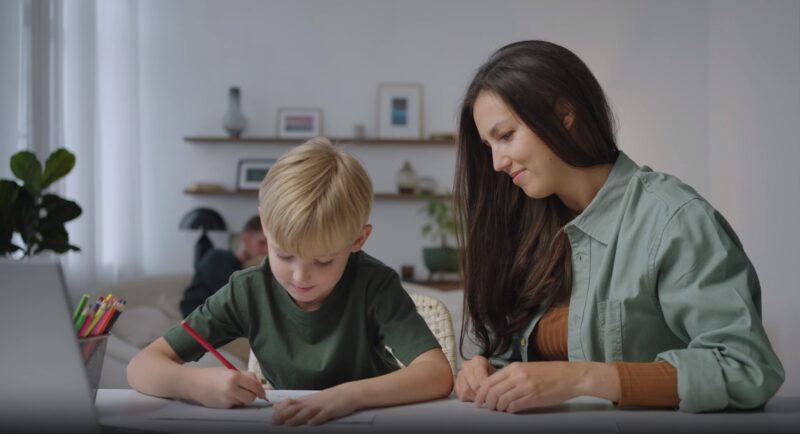Children thrive on predictability. A well-structured routine helps them understand what to expect next, reducing anxiety and behavioral issues. It also aids in establishing healthy habits, like regular meal times and a consistent bedtime, which are essential for physical and mental development.
A thoughtfully crafted routine offers numerous benefits. It can enhance a child’s ability to manage time and tasks, improve their focus and attention, and boost their confidence as they learn to complete tasks independently.
Every child is unique, and so should be their routine. It’s important to consider the child’s age, temperament, and individual needs while crafting a daily routine. What works for one child may not work for another, and the routine should be flexible enough to accommodate these differences.
Key Takeaways

- Understand Child’s Needs: Tailor routines to fit each child’s age, personality, and individual needs.
- Morning Routine: Establish a consistent morning routine involving waking up, personal hygiene, and a nutritious breakfast.
- Consistency vs. Flexibility: Maintain consistency in routines while being adaptable to changes and individual circumstances.
- Child Involvement: Actively involve children in planning their routines to foster responsibility and independence.
- Dealing with Challenges: Develop strategies to handle resistance and adapt routines during significant life changes.
- Additional Tools: Use apps, planners, and educational resources to support and track the effectiveness of routines.
- Support and Encouragement: Provide continuous support and positive reinforcement to children adapting to new routines.
Focus on Your Child’s Needs
Creating a daily routine that resonates with your child involves understanding their unique needs, preferences, and developmental stage. This section focuses on tailoring routines to suit individual children, considering their age and personality.
- Age-Appropriate Routines: Children’s needs change as they grow. Toddlers require more nap times and play, while school-aged children need structured time for homework and extracurricular activities. Teens, on the other hand, benefit from more autonomy and flexibility in their routines.
- Recognize Individual Differences: Each child has a unique temperament and set of preferences. Some may be morning people, while others might find it easier to be active in the evening. Some children may need more physical activity, while others might prefer quiet, indoor activities.
- Incorporate both Education and Entertainment: While education is important, play should not be overlooked. It’s essential to balance educational activities with playtime, allowing children to explore, be creative, and relax.
- Understand Emotional and Physical Needs: Children also have varying emotional and physical needs. Some might require more emotional support and one-on-one time, while others might be more independent.
- Ensure Flexibility: While routines are important, being too rigid can be counterproductive. It’s important to be flexible and allow for changes, such as sleeping in a little on weekends or changing meal times when necessary.
How to Start?

Establishing a basic daily structure is key to a successful routine. Keep in mind that it can be difficult to implement all of them at once. However, you should focus on building habits that your kids will quickly accept as a daily routine.
Morning Routine
- Wake Up Time: Set a consistent waking time to regulate the child’s body clock.
- Morning Hygiene: Encourage habits like brushing teeth and washing face.
- Breakfast: Stress the importance of a nutritious breakfast for a healthy start to the day.
- Preparation for the Day: Include time for dressing and gathering necessary items for school or activities.
Afternoon Activities
- Lunch: Emphasize a regular lunchtime with balanced nutrition.
- Homework and Study Time: Allocate specific periods for schoolwork.
- Play and Downtime: Ensure there’s time for unstructured play or relaxation.
- Extracurricular Activities: Schedule time for sports, music, or other hobbies.
Evening Routine
- Dinner Time: Have a fixed time for family dinners, encouraging healthy eating habits.
- Family Time: Dedicate a period for family activities or discussions.
- Wind-Down Activities: Include calming activities like reading or quiet play to signal bedtime is near.
- Bedtime Routine: Establish a consistent bedtime ritual, including hygiene tasks like brushing teeth and a bedtime story or quiet chat.
Balance Between Flexibility and Consistency

A key aspect of creating an effective daily routine for children is finding the right balance between consistency and flexibility. What you must understand is that changes won’t happen overnight. Also, becoming too strict over certain things will only lead to negative effects, while not having a positive impact on a child’s behavior.
Be Consistent
- Predictability and Security: Consistent routines help children feel secure and understand what is expected of them.
- Habit Formation: Regular routines aid in developing good habits, such as timely homework completion and healthy eating.
- Reduced Behavior Problems: Predictable schedules can reduce anxiety and behavioral issues in children.
Allow Some Level of Flexibility
- Adapting to Changes: Life is unpredictable. Be ready to adjust the routine for special occasions, illnesses, or unexpected events.
- Listening to Your Child: Pay attention to your child’s cues. If they are consistently struggling with a part of the routine, it may be time to make some adjustments.
- Balancing Rigidity and Adaptability: While maintaining the core elements of the routine, allow for small variations to keep the child engaged and responsive.
Tips for Balancing Flexibility and Consistency
- Communicate Changes: When changes occur, explain them to your child in advance to help them adjust.
- Set Priorities: Identify the non-negotiable parts of your routine and be more flexible with others.
- Review and Revise: Regularly review the routine to ensure it still meets your child’s needs and make adjustments as they grow and their needs change.
Involve Your Kid in Planning

Involving children in the planning of their daily routine is not just about making the process easier; it’s about empowering them and giving them a sense of ownership. These are the steps that will help you make the whole process much easier.
- Engagement and Participation: Encouraging children to participate in the planning process helps them feel valued and respected. It’s an opportunity for them to express their preferences and interests, which can be incorporated into the routine. This engagement can lead to a greater willingness to follow the routine, as they feel it’s partly their creation.
- Highlight Responsibility and Independence: By involving children in routine planning, you are teaching them important life skills. They learn about time management, prioritizing tasks, and the importance of balance between work (like school and chores) and play. These are invaluable lessons that will serve them well throughout their lives.
- Find the right Way to Involve Children: The level of involvement will depend on the child’s age and maturity. For younger children, it could be as simple as letting them choose between two pre-selected options for breakfast or what book to read at bedtime. Older children can be involved in more complex decisions, like planning their after-school activities or setting up their study schedule.
- Create a Collaborative Environment: Make routine planning a collaborative and fun activity. This can strengthen your bond with your child and make the routine something they look forward to rather than something they have to endure.
| Child Engagement | Involve children in routine planning to make them feel valued and respected. |
| Teaching Skills | Helps in teaching children about responsibility, time management, and prioritizing. |
| Level of Involvement | Varies based on age and maturity; younger children make simpler choices, older children take on more complex planning. |
| Benefits | Increases commitment to the routine and understanding of its importance, leading to less resistance. |
| Collaboration | Turns routine planning into a collaborative and bonding activity. |
How to Deal with Challenges and Changes?

Creating and maintaining a routine for children is not always a smooth process. There will be challenges and changes along the way.
Initial Resistance
It’s common for children to resist routines, especially when they are new or after a break like a holiday. When facing resistance, it’s important to understand the root cause. Is the routine too rigid? Is the child feeling overwhelmed?
Addressing the underlying issue is key to overcoming this challenge. Consistency, patience, and positive reinforcement can also help in managing resistance.
Adapting Period
Major life events like starting school, a new sibling, moving to a new home, or changes in the family dynamic can disrupt established routines. During these times, it’s crucial to be patient and give your child time to adjust to the new normal.
Keep the communication open and provide reassurance. Gradually reintroduce the routine, making adjustments as needed to accommodate the new circumstances.
Flexibility is Key

Remember that routines are meant to bring order and not stress. If a routine is causing distress to the child or the family, it’s time to reassess and make necessary changes. Flexibility is crucial in managing both daily hiccups and major life changes.
Try to Maintain Balance
While it’s important to stick to a routine, it’s equally important to ensure that it doesn’t become monotonous. Injecting small variations, like a surprise outing or a different activity, can keep the routine fresh and exciting for the child.
Seek Support When Needed
Don’t hesitate to seek support if you’re struggling to establish or maintain a routine. This can be from family, friends, or professionals like pediatricians or child psychologists. They can offer valuable advice and perspective.
Use the Right Tools and Resources
To aid in creating and maintaining an effective daily routine for children, there are various tools and resources available. This section will highlight some of the useful tools that parents and caregivers can utilize.
- Apps and Planners: Technology can be a great ally in managing daily routines. There are several apps designed to help track children’s schedules, set reminders, and even gamify tasks to make them more engaging for kids. Planners, either digital or physical, can also be effective, especially for older children who can take part in filling them out.
- Books and Guides: Numerous books and guides offer insights and tips on creating effective routines for children. These resources often provide age-appropriate suggestions and strategies that can be customized to fit individual family needs.
- Educational Resources: Online platforms and educational tools can be integrated into the daily routine to enhance learning experiences. These can include educational games, e-books, and interactive learning modules that make learning fun and engaging.
- Support Groups and Online Forums: Sometimes, the best resources come from other parents and caregivers. Online forums and social media groups can provide a platform to share experiences, challenges, and ideas about managing daily routines with children.
| Apps and Planners | Digital tools to track schedules, set reminders, and engage children in routine tasks. |
| Books and Guides | Provide strategies and suggestions for age-appropriate routines and activities. |
| Educational Resources | Online learning tools and games that can be integrated into daily routines for enhanced learning. |
| Support Groups | Online communities for sharing experiences and advice with other parents and caregivers. |
FAQs
How to create a daily routine for my child?
To create a daily routine for your child, start by considering their age, needs, and preferences. Establish consistent times for meals, sleep, and activities. Balance structured tasks like schoolwork with free play and relaxation. Involve your child in the planning process to make the routine more engaging for them.
What is a parent routine?
A parent routine refers to the daily schedule that parents follow, often in sync with their children’s routines. It includes managing household tasks, work responsibilities, and caregiving activities. A well-planned parent routine helps in efficiently balancing personal and family needs, while also setting a good example for children about time management and organization.
Why is lack of routine bad for children?
A lack of routine can be detrimental to children as it can lead to feelings of insecurity and disorganization. Routines provide a sense of structure and safety, helping children understand expectations and manage their time.
How to set a routine for a 5-year-old?
For a 5-year-old, set a routine that includes a consistent wake-up time, meals, playtime, learning activities, and a bedtime ritual. Include simple chores to teach responsibility. Ensure there is a balance between structured activities and free play.
Last Words
The importance of consistency, coupled with the necessity of flexibility, forms the backbone of an effective routine. Involving children in the planning process not only makes the routine more effective but also teaches them valuable life skills.
There will be days when the routine goes off track, and that’s okay. What matters is the effort and intention behind it. Remember, each family is unique, and what works for one may not work for another. It’s all about finding what works best for you and your child.
